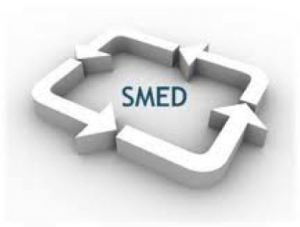Profit = Price-Cost: Using Lean Thinking as a Sales Strategy
By Terry Rayner
 You might ask how can “Lean Thinking” drive sales? Here’s how: When somebody suggests you reduce your costs, don’t go out and cut your head count or reduce salaries by 10%; instead stand on your head and look at reducing costs by becoming more efficient!
You might ask how can “Lean Thinking” drive sales? Here’s how: When somebody suggests you reduce your costs, don’t go out and cut your head count or reduce salaries by 10%; instead stand on your head and look at reducing costs by becoming more efficient!
To increase sales one strategy can be to go in at lower prices than your competition; however, if you bring in new business at a lower price it might not bring in the desired results. Unless, you can produce the lower priced work more efficiently!
So the strategy of stealing business from the competition at lower prices must be connected to a strategy of being able to produce that work with lower costs!
Here’s an example of how Lean Thinking works (SMED):
A 4-color make-ready on your 40” 6-color press takes 45 minutes. You work the press around the clock, five days per week and average six jobs per day.
 Get your pressroom team together and challenge them to reduce the make-ready by 50%. Yes fifty percent! Ask the operators and press helpers what can be done to reduce the make-ready time. Get a whiteboard and write down all of the ideas, then implement.
Get your pressroom team together and challenge them to reduce the make-ready by 50%. Yes fifty percent! Ask the operators and press helpers what can be done to reduce the make-ready time. Get a whiteboard and write down all of the ideas, then implement.
Go out to the press and spend time watching and recording what is happening, video the make readies and review the videos with your press teams. Try spaghetti mapping – check motion – look for unnecessary motion and actions, then correct them. Look for waiting – are all the materials and supplies on hand and accessible before the make-ready starts? Did the press team start preparing for the next job while they are still running their current job? Do you use all of the technology available to you? Such as entering the CIP file, or pre-loading the plates while still running the current job (if you have these capabilities).
OK, first time you do this imagine you find you are able to reduce the make-ready from 45 minutes to 30 minutes – not the 50% reduction you strived for, however, a 15 minute reduction (or 33%) is still great!
Now start doing the math:
- 6 x 15 minutes = 90 minutes
- x 5 days = 450 minutes saved per week
- = 7.5 hours saved per week, which equals 390 hours per year
- Or the equivalent of almost 49 eight hour shifts per year!
Now go and sit down with your best sales rep and tell him or her that they can bring in a new account at prices 10% lower than your normal selling prices – I bet your life they have a potential client on the radar.
Fill the “found” hours with the new business and the press room contribution from this new business drops straight to the bottom line!
This is how Lean Thinking works to drive sales!
Now go out and do this in every area of your business and not only will you be able to add new sales to fill the capacity, but existing sales will become more profitable too!
 So the moral of this story is: If you are a printing manager and you spend your time reviewing costs “Actual vs. Estimate” and worrying about the variance – you are spending your time looking at the wrong data. If you do not know EXACTLY what your average make-ready is on every piece of your production equipment then you are reviewing the WRONG NUMBERS!
So the moral of this story is: If you are a printing manager and you spend your time reviewing costs “Actual vs. Estimate” and worrying about the variance – you are spending your time looking at the wrong data. If you do not know EXACTLY what your average make-ready is on every piece of your production equipment then you are reviewing the WRONG NUMBERS!
Spend your time reviewing numbers that will enable you to make a difference in your business; because once you know what your average make-ready times are, you can work on reducing them!
Get Lean Thinking… it does make the difference!
With over 25 years of print management experience Terry Rayner is a Lean Thinking Guru. Using his blend of customer focused philosophies and continuous improvement methodologies he has led companies through major changes to emerge re-energized. Certified in Lean Six Sigma Processes for manufacturing, office and sales environments he is relentless in his pursuit to eliminate wastes, which increase efficiencies and effectiveness; ultimately leading to higher customer satisfaction and significant profit growth.
Connect with Terry: Getleanthinking.com / LinkedIn / Twitter











